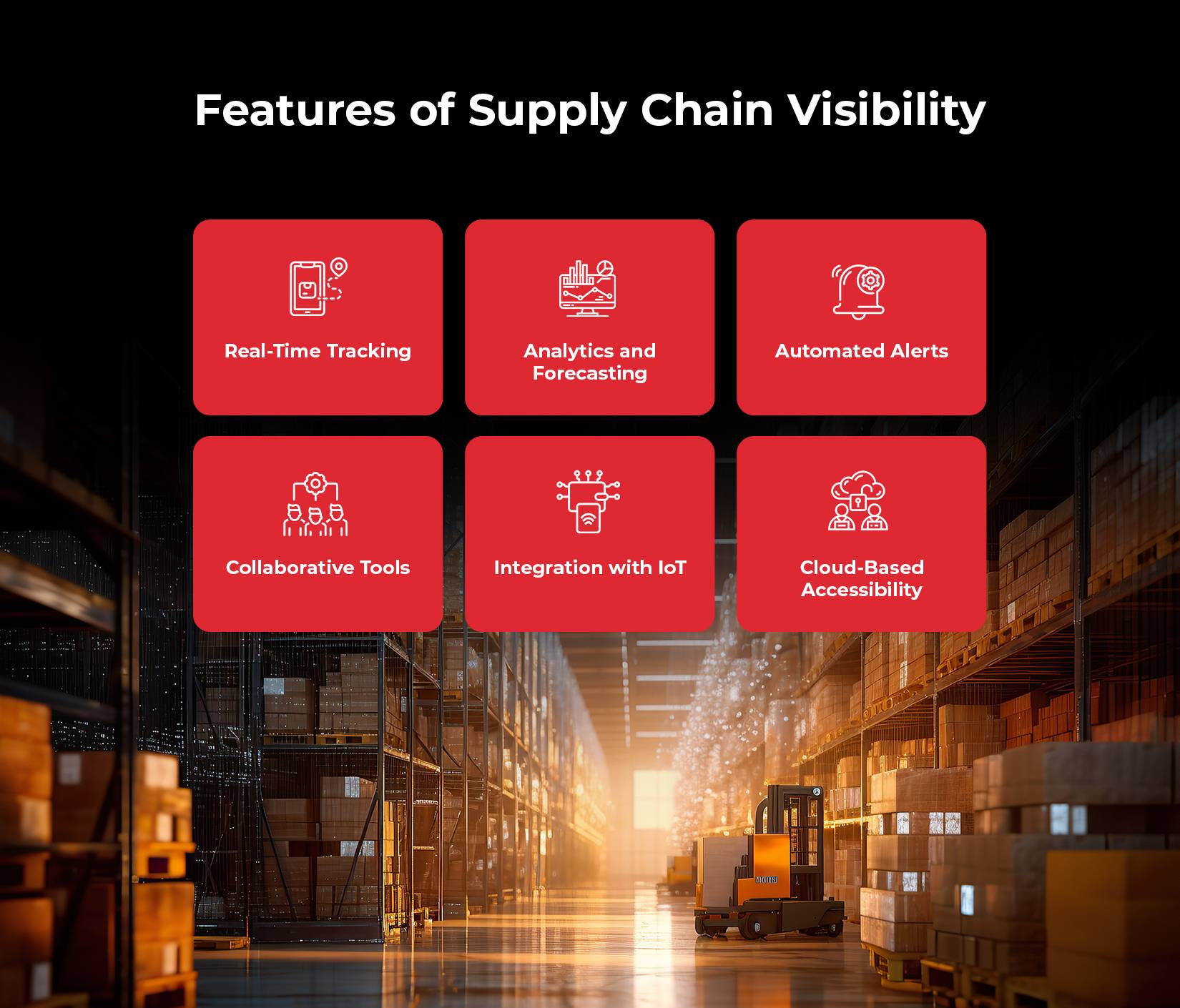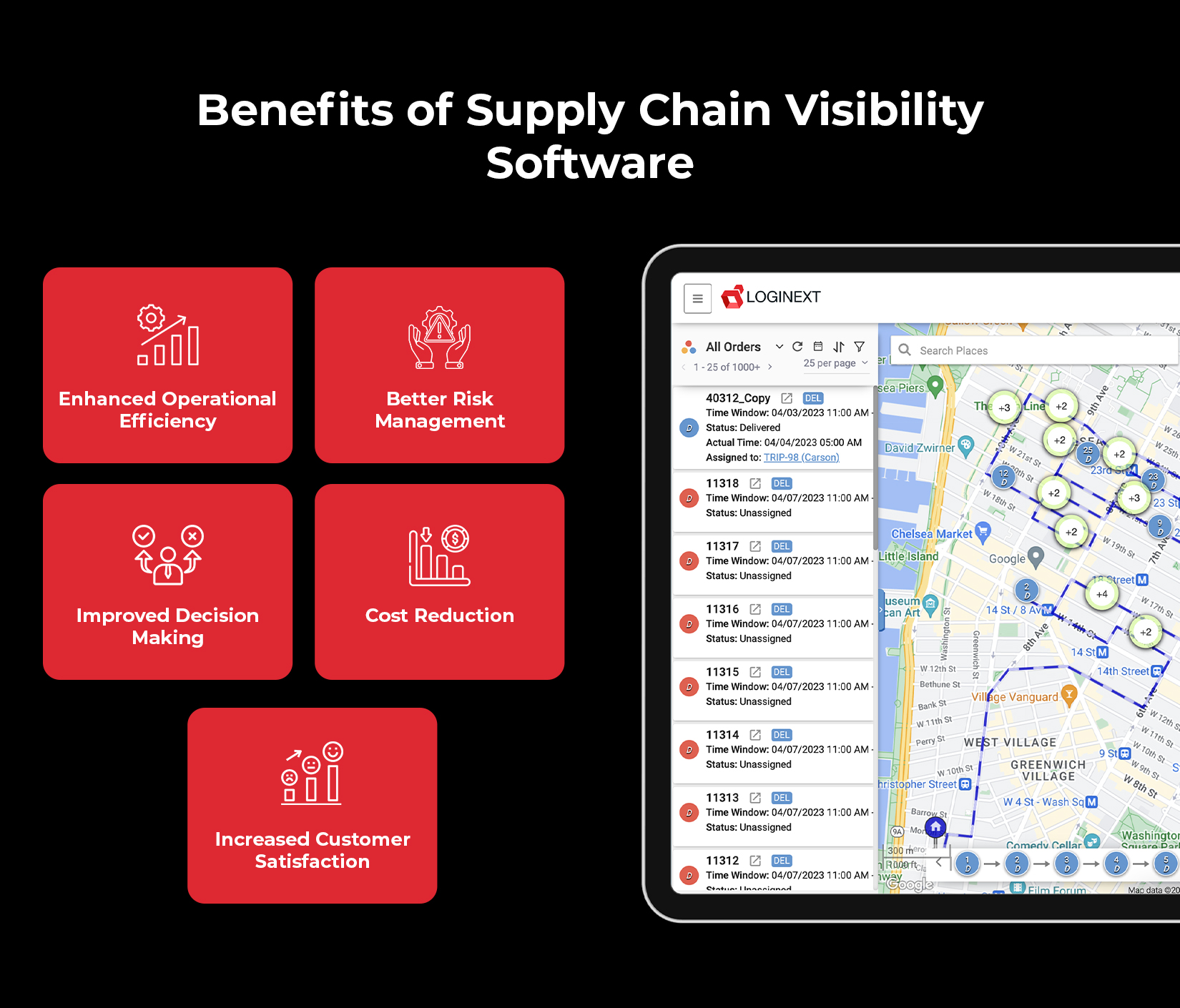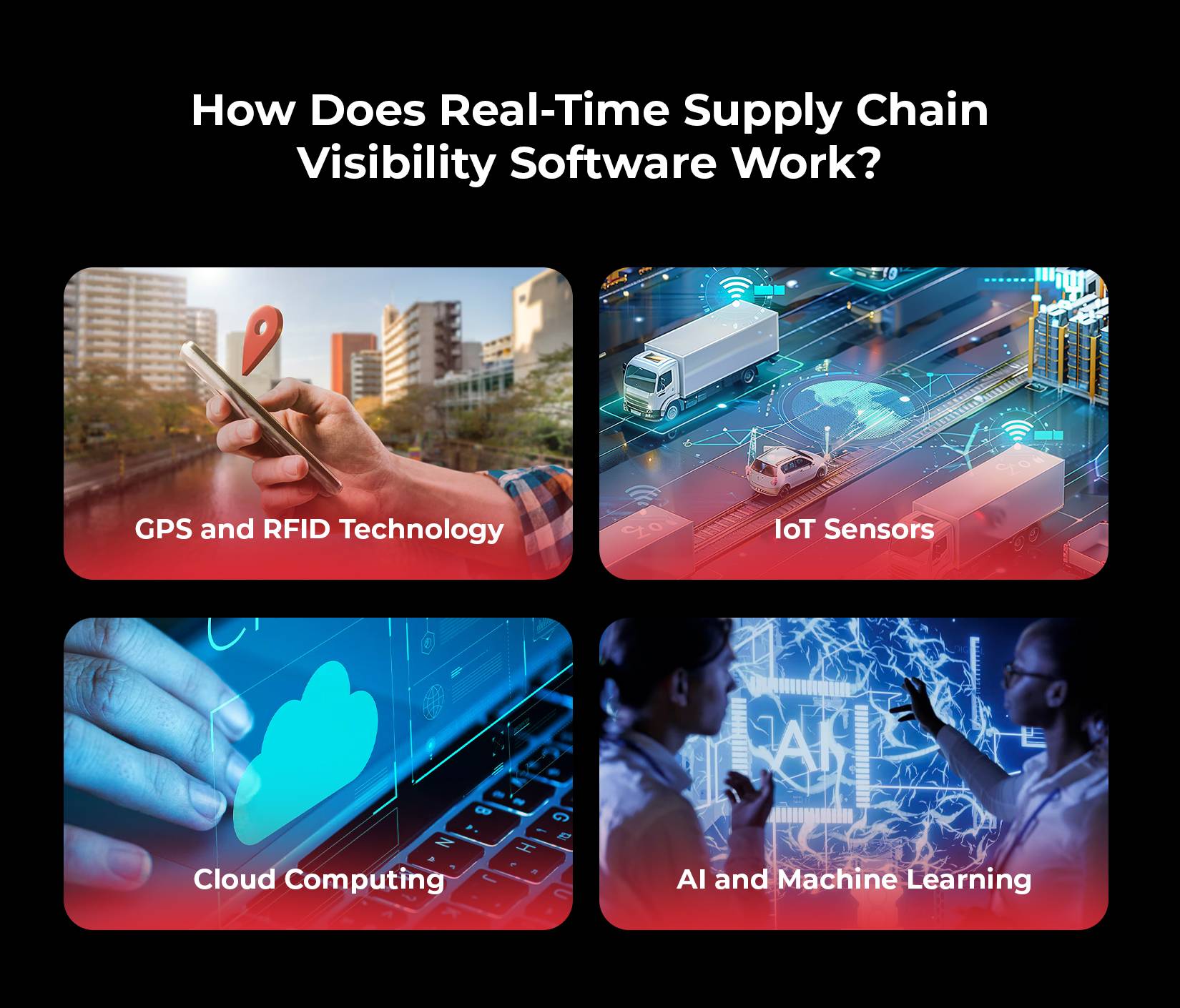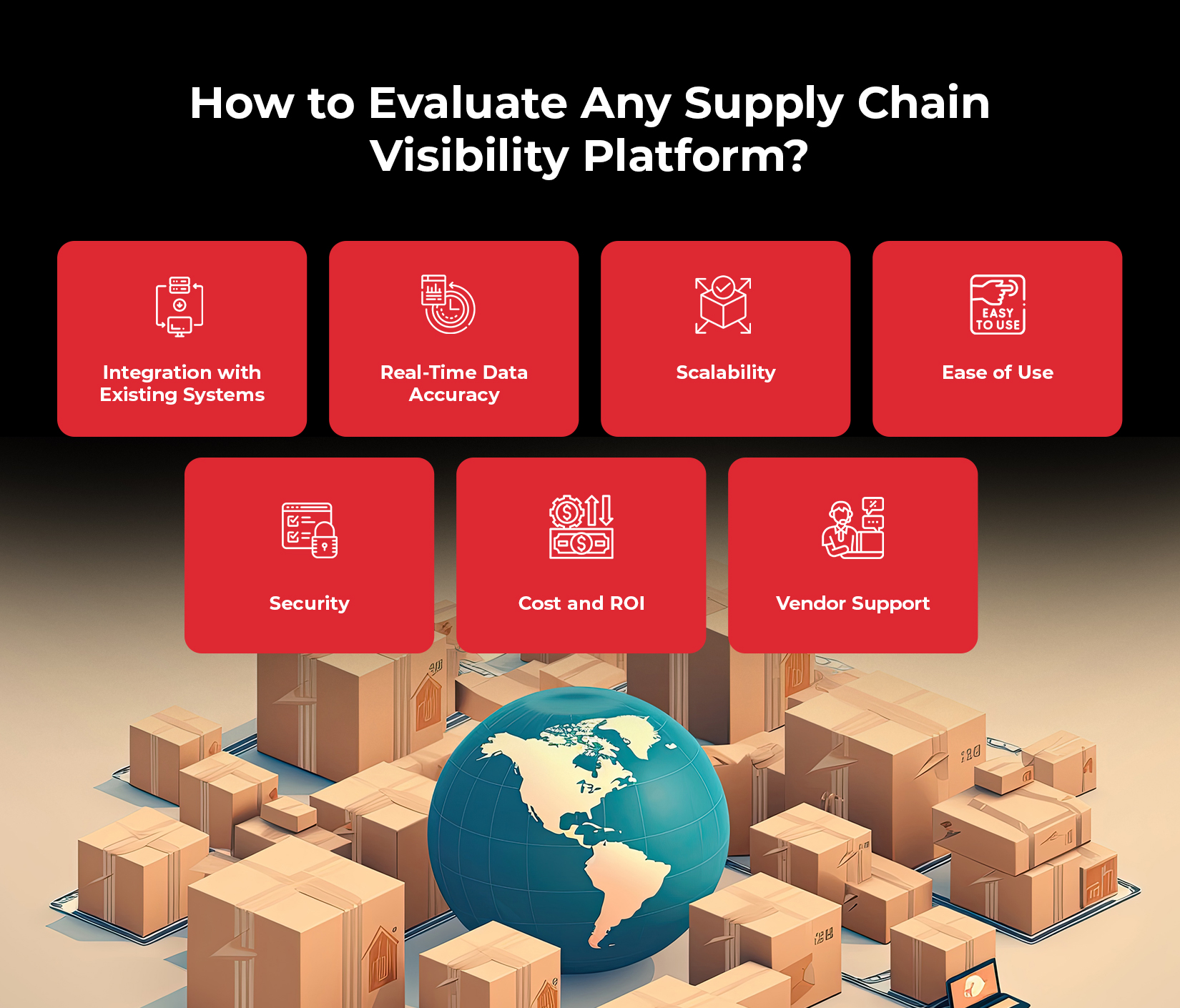
Supply Chain Visibility Software (SVCS): A Comprehensive Guide
Managing a global supply chain in today’s digital age demands more than traditional methods. To keep pace with increasing customer expectations and mitigate risks, businesses are turning to Supply Chain Visibility Software (SCVS) for seamless, real-time tracking across their supply chains. According to Gartner, by 2025, 80% of companies will have invested in SCVS, up from 50% in 2022. This trend highlights the growing importance of transparency and real-time data in the logistics industry.
In this comprehensive guide, we will delve into the features, benefits, and trends surrounding Supply Chain Visibility Software, and how it can revolutionize your business.
What is Supply Chain Visibility Software?
Supply Chain Visibility Software is a digital platform that provides businesses with a transparent view of their entire supply chain operations, from raw material sourcing to product delivery. This software integrates data from various systems, allowing real-time tracking of inventory, shipments, and production processes. It helps companies monitor each phase of the supply chain, identify potential disruptions, and take corrective action before issues escalate.
According to a report by McKinsey, companies with end-to-end supply chain visibility saw a 15% reduction in lost sales and an increase in on-time deliveries by 25%. With SCVS, businesses can optimize their operations and deliver better customer experiences.
Features of Supply Chain Visibility Software

An effective Supply Chain Visibility Software comes equipped with several key features that enable seamless tracking and coordination. Here’s what to look for:
1. Real-Time Tracking:
Track goods, vehicles, and inventory in real-time. This capability reduces the risk of theft, damage, or delays. According to a survey by Deloitte, 90% of supply chain executives cite real-time tracking as a top priority for visibility.
2. Analytics and Forecasting:
Advanced SCVS platforms use predictive analytics to forecast potential risks, inventory shortages, and demand fluctuations. Businesses that use predictive analytics see a 30% improvement in order fulfillment rates.
3. Automated Alerts:
The system generates alerts for delays, temperature fluctuations (critical for perishable goods), or any other disruptions in the supply chain. This instant feedback allows companies to mitigate issues quickly.
4. Collaborative Tools:
SCVS fosters collaboration between suppliers, manufacturers, transporters, and retailers, ensuring transparency at every stage. Improved collaboration reduces miscommunication, which 40% of companies say is their biggest challenge in managing supply chains.
5. Integration IoT:
Internet of Things (IoT) sensors provide real-time data on products in transit. For instance, temperature sensors can monitor cold-chain logistics to ensure compliance. According to a Capgemini report, IoT-integrated SCVS improves asset visibility by 40%.
6. Cloud-Based Accessibility:
SCVS platforms are increasingly adopting cloud technology, offering accessibility to key data from anywhere. Cloud-based solutions also reduce infrastructure costs by 30% and enable scalability as businesses grow.
Benefits of Supply Chain Visibility Software

1. Enhanced Operational Efficiency:
With real-time insights, businesses can streamline operations, reduce delays, and enhance inventory management. Companies with SCVS report a 20% reduction in transportation costs and a 30% improvement in warehouse efficiency.
2. Better Risk Management:
Visibility across the supply chain allows for early detection of potential issues, such as supply shortages or transportation delays. Companies with comprehensive SCVS are 25% more resilient to disruptions, according to a report by MIT Sloan.
3. Improved Decision Making:
Data-driven insights enable better decisions, from route planning to inventory optimization. Businesses using data-driven supply chain solutions improve order accuracy by 27%.
4. Cost Reduction:
Reduced waste, better route planning, and inventory optimization lead to lower operational costs. SCVS users report a 5-10% reduction in overall supply chain costs, as per a survey conducted by Supply Chain Dive.
5. Increased Customer Satisfaction:
SCVS ensures on-time deliveries and transparency, giving customers visibility into their orders. This level of service results in a 15% increase in customer satisfaction and reduces complaints related to shipment issues by 35%.
5 Ways Supply Chain Visibility Will Help Your Business
1. Faster Response to Market Changes:
SCVS enables businesses to adapt quickly to demand changes, supply shortages, or route disruptions. Companies with agile supply chains report a 35% faster response to market fluctuations.
2. Optimized Inventory Management:
Real-time tracking of stock levels and product movement allows for better inventory control, reducing overstock and understock issues by 20-30%.
3. Lower Operational Costs:
By identifying inefficiencies, SCVS helps businesses cut costs related to warehousing, transportation, and labor. Studies show a 10-15% cost reduction in supply chain operations with the use of visibility tools.
4. Minimized Supply Chain Disruptions:
Predictive analytics in SCVS detect potential disruptions, such as supplier delays or transportation bottlenecks, helping businesses avoid downtime. This reduces disruptions by 20% on average.
5. Improved Supplier Relationships:
Transparency fosters trust and stronger relationships with suppliers, ensuring smooth collaboration. Businesses with transparent supply chains are 45% more likely to retain long-term supplier partnerships.
How Does Real-Time Supply Chain Visibility Software Work?

Real-time Supply Chain Visibility Software relies on various technologies to deliver accurate, up-to-date information:
1. GPS and RFID Technology:
These technologies enable tracking of goods and vehicles. GPS is used to track the location of shipments, while RFID tags provide data on individual products or pallets. Studies indicate that RFID-enabled SCVS increases inventory accuracy by 99.9%.
2. IoT Sensors:
IoT devices embedded in containers or vehicles transmit data on temperature, humidity, and location. This is especially valuable for sensitive goods like pharmaceuticals or perishable foods, reducing spoilage rates by 30-50%.
3. Cloud Computing:
Data collected from sensors and GPS systems is transmitted to the cloud, allowing for remote monitoring and real-time access. Cloud-based SCVS has been shown to reduce downtime and data silos by 40%.
4. AI and Machine Learning:
AI analyzes large data sets to predict future risks or disruptions and optimize supply chain routes and processes. Machine learning can automate tasks such as route planning and inventory management, improving overall efficiency by 20-30%.
AI and Its Impact on Real-Time Supply Chain Visibility Software
Artificial Intelligence is transforming the way supply chains operate by enhancing data processing and decision-making:
1. Predictive Analysis:
AI uses historical data to predict potential disruptions, such as delays or demand spikes, enabling companies to take proactive steps. 52% of supply chain leaders say AI has improved demand planning accuracy.
2. Process Automation:
AI can automate routine tasks like order processing, route optimization, and inventory management. Businesses using AI report a 15-25% improvement in operational efficiency.
3. Enhanced Data Insights:
AI-driven SCVS systems can analyze massive datasets in real-time, providing actionable insights for supply chain managers. This reduces data processing time by 40%.
How to Evaluate Any Supply Chain Visibility Platform?

When selecting the best Supply Chain Visibility Software, consider these factors:
1. Integration with Existing Systems:
Ensure compatibility with your current ERP, WMS, or TMS platforms.
2. Real-Time Data Accuracy:
Look for platforms that offer real-time updates with minimal data lag.
3. Scalability:
Choose a solution that can grow with your business as your operations expand.
4. Ease of Use:
Opt for software with an intuitive user interface to ensure smooth adoption by employees.
5. Security:
The platform should provide data encryption and robust security measures to protect sensitive information.
6. Cost and ROI:
Analyze the total cost of ownership versus the potential return on investment. Businesses typically see an ROI of 15-20% from their SCVS investment.
7. Vendor Support:
Reliable customer support is crucial for smooth implementation and troubleshooting.
What Are the Best Supply Chain Visibility Software? (Top 5 Supply Chain Visibility Software of 2024)
1. LogiNext Mile:
LogiNext Mile optimizes last-mile delivery by automating resource and vehicle management, route planning, and dispatch scheduling, while offering real-time tracking to cut costs and improve efficiency.
2. Project 44:
Project44 offers a logistics platform with features such as freight ETA, pickup and delivery tracking, container and rail tracking, LTL/VLTL, and automated shipping documents, enabling real-time, automated data sharing across the supply chain.
3. FourKites:
FourKites offers freight tracking solutions for truckload, ocean, and rail, with features like predictive ETA, proof-of-delivery, dock rating, and refrigerated freight tracking, handling 2.5M+ shipments daily.
4. Shippero:
Shippeo, Europe’s leading real-time transportation visibility provider, boosts customer service and efficiency with live tracking, process automation, and accurate ETAs via its advanced algorithm.
5. Oracle SCM Cloud:
Oracle SCM & Manufacturing on Fusion Cloud helps organizations adapt to demand, supply, and market shifts with comprehensive apps for supply chain, distribution, manufacturing, inventory, and fleet management.
Conclusion
Supply Chain Visibility Software is revolutionizing how businesses manage their logistics and operations. From enhanced efficiency and cost savings to improved customer satisfaction, the benefits are clear. As the global supply chain continues to evolve, investing in SCVS is essential for staying competitive. Whether you’re looking to improve inventory management, reduce lead times, or minimize disruptions, the right platform will provide the insights needed to optimize your operations.
With advancements in AI and real-time data processing, the future of supply chain visibility is more dynamic than ever. The companies that leverage these tools will lead the way in innovation and operational excellence. Book a demo by clicking on the red button below, and leverage the best SCVS tool from LogiNext Mile.
119







@LogiNext